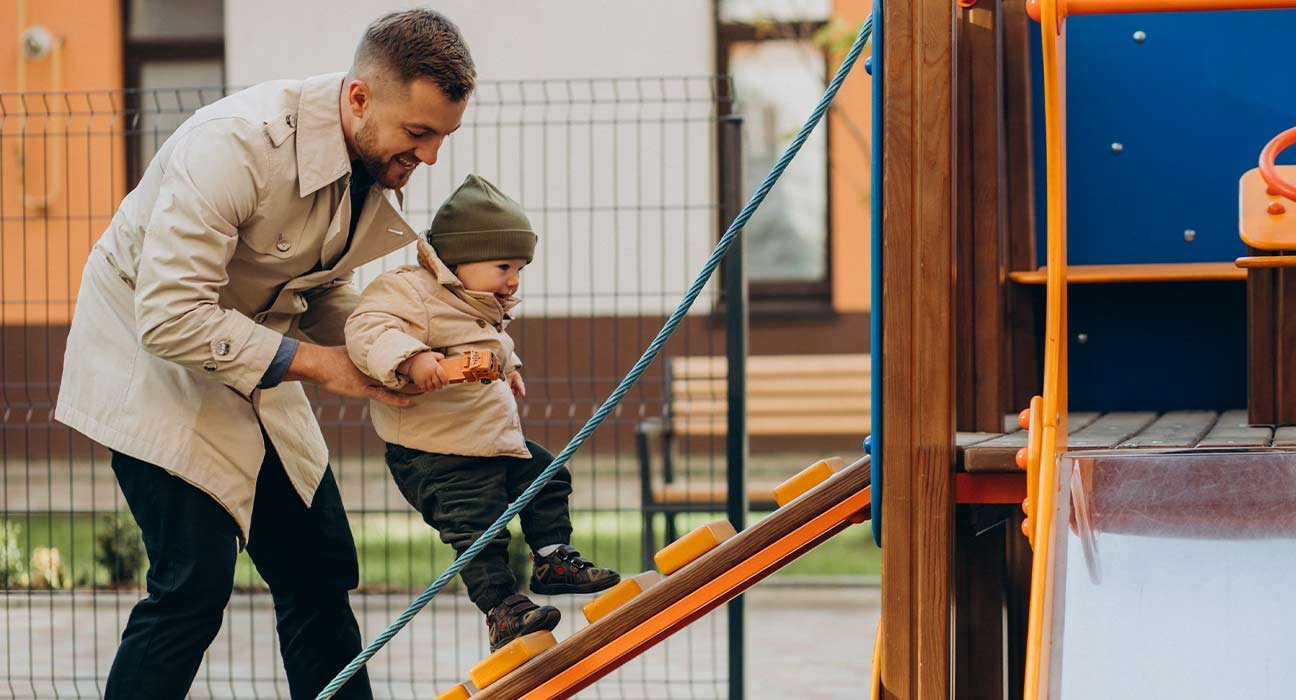From day one, a child starts making attachments and tries to connect with others emotionally. An Attachment is a deep and enduring emotional bond typically between the infant and the primary caregiver, mainly the parent. The primary needs of an infant is met by a parent only. A theorist John Bowlby defined attachment as the innate need of humans. He described that a child is born with the biological predisposition of making close and comfortable contact with their caregiver. These comfort contacts gave a sense of security and safety to the infant and ultimately helped them to explore their environment and understand themselves. It is well proven that the quality of our attachment relationship in early life impacts our development, and typically impacts our adult relationships.
Tips to develop a healthy attachment with the infant are:-
- Be responsive to your infant’s needs
- Be consistent in caregiving
- Communicate with the infant
- Spend time with your infant
- Be patient and understand
- Practice mindfulness
- Don’t be afraid to ask for help
Attachment Styles
Attachment style is a pattern of behavior that develops in our early relationship with our caregiver. According to psychologist John Bowlby, there are four types of attachment styles.
- Secure attachment style
- Avoidant attachment style
- Ambivalent attachment style
- Disorganized Attachment style
Secure Attachment Style- Children with secure attachments feel confident that their caregivers will be available and responsive to their needs.
Characteristics of a child with a secure attachment style:-
- Greets their caregiver with excitement when they return home.
- Seeks the comfort of their caregiver.
- Express emotions in a healthy way.
- Trust their caregiver and feel secure in their presence
If you see these characteristics in any child it’s more likely that the child will develop a secure attachment style and a healthy relationship in the future with their partner.
Ambivalent Attachment style
It is an unpredictable kind of attachment style where attachment depends on the child’s mood. A child displays a combination of reactions in the presence or absence of their caregiver. For example, Sometimes child might stay close to their primary caregiver and sometimes they might avoid and explores the environment and might show great distress when the primary caregiver leaves. It is often developed in childhood when a child’s caregiver is inconsistently available or responsive to their needs. This can lead to a child to develop feelings of insecurity and anxiousness.
Characteristics of a child with an ambivalent attachment style:
- Clingy and demanding of their caregiver’s attention
- May have difficulty separating
- Experience negative emotions like fear, anger and sadness
An infant with an ambivalent attachment style may have difficulty in trusting others and may be more likely to experience anxiety and insecurity in their relationships in adulthood. In an attempt to feel secure in their relationships, they may also be more likely to engage in controlling or manipulative behaviors.
Avoidant attachment style- It is also an insecure attachment style in which the child desires independence and avoids the proximity with the caregiver. It often develops when a child’s caregiver is inconsistently available or responsive to their needs. They do not show much distress when the caregiver leaves and usually avoid them when they return.
Characteristics of a child with Avoidant attachment style:-
- Avoid seeking comfort
- Seem self-sufficient and independent
- Unexpressive
As adults, people with an avoidant attachment style may have difficulty trusting others and may be more likely to experience anxiety and insecurity in their relationships. They may also be more likely to engage in distancing behaviors in an attempt to protect themselves from feeling hurt or rejected.
Disorganized Attachment style
The disoriented and disorganized behavior of a child develops because of inconsistent availability of their primary caregiver. They show contradictory behavior and emotions. Usually avoids the caregiver, initially seems calm, but suddenly bursts into tears. This confusion may indicate that they are least securely attached of all the other children.
Characteristics of a child with Disorganized Attachment style:-
- Exhibit contradictory behaviors and emotions
- Difficulty in trusting
- Unexpressive
As adults, people with disorganized attachment styles may have difficulty trusting others and may be more likely to experience anxiety and insecurity in their relationships. They may also be more likely to engage in self-destructive or risky behaviors.
Tips for caregivers
A primary caregiver can develop a healthy attachment style in their infant. The following tips will help:-
- Be responsive to your infant’s needs.
- Be consistent in your caregiving
- Communicate with your infant
- Spend time with your infant
- Be patient and understanding
- Be mindful of your own emotions
- Make eye contact with your infant
- Talk to your infant in a gentle and soothing voice
- Sing to your infant
- Play with your infant
- Be patient and understanding
